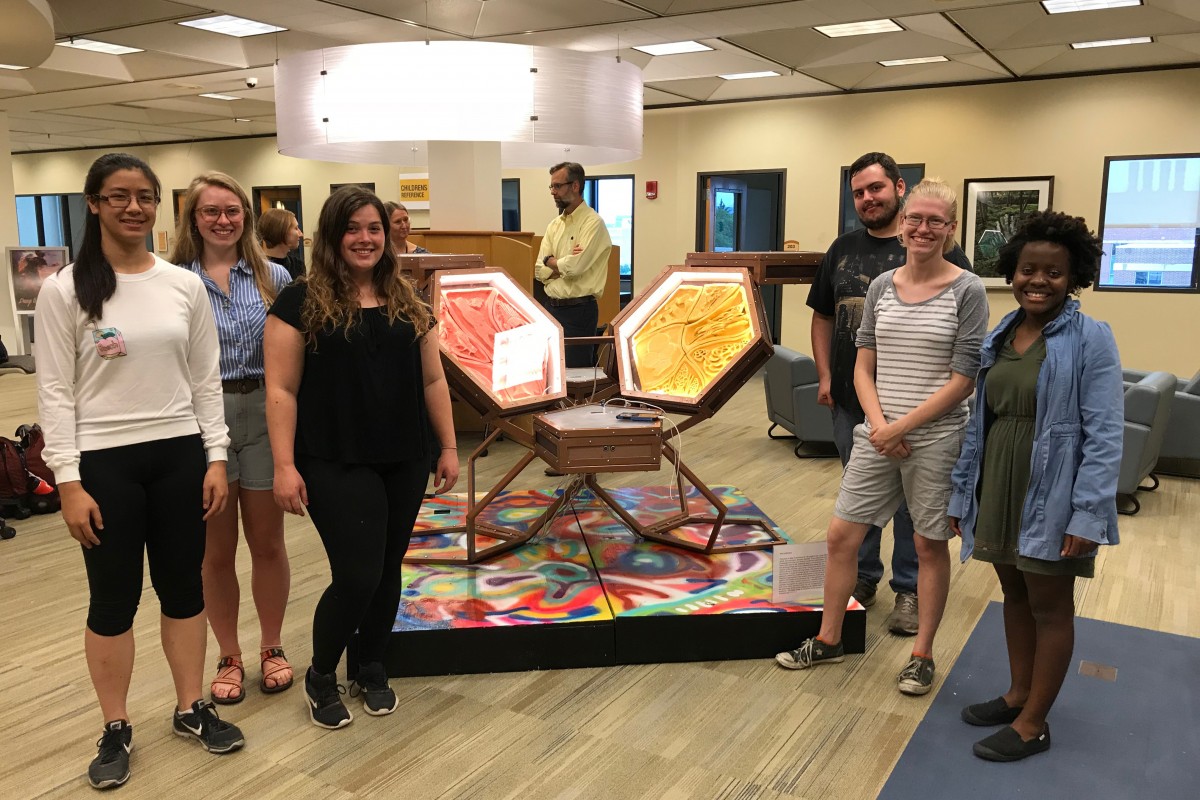MORGANTOWN — An interactive sculpture on display at WVU’s Evansdale Library illustrates the structure and function of a particular enzyme and can charge your smartphone.
The metal, wood and ceramic work, titled “Cytochrome C,” is the creation of a team of artists, chemists and engineers from WVU and two other universities assembled as part of the Community Engagement in Science through Art (CESTA) program.
“The four-week summer program brings together students in the science, engineering, and art disciplines to design and build an interactive chemistry-art installation in Morgantown with the goal of improving cross-discipline communication and collaboration among the students while also bringing science to the community in a format that is fun, interesting and beautiful,” said Jessica Hoover, an assistant professor of chemistry, Eberly College of Arts and Sciences.
The CESTA 2018 team includes WVU students Nysha Hongpaisan, engineering; Kyleen Kelly, art education; Erin McCarty, M.F.A.; Pamela Saidoni, engineering; and Sarah Starcovic, Fairmont State University, chemistry and biology; and Samuel Dickson, Youngstown State University, chemistry.
The students worked collaboratively throughout most of June to design and construct “Cytochrome C” and then install the sculpture on the second floor of Evansdale Library.
Hoover said the underlying theme of this year’s piece is community and connection, and the charging capabilities of the sculpture play with the concept of Cytochrome C’s role in the biological electron transport chain.
“The students were also intrigued by the conservation of Cytochrome C across the kingdoms of life and included reference to this trait in the four panels containing ceramic reliefs of organisms from each of four kingdoms,” Hoover said.
Hoover started CESTA with Todd Hamrick, teaching associate professor of engineering, Benjamin M. Statler College of Engineering and Mineral Resources, and Jason Lee, an associate professor sculpture, College of Creative Arts.
The program is funded by Hoover’s National Science Foundation CAREER award. The goals of the program are to engage the community in chemistry thro-ugh art and to teach WVU science, engineering, and art students to work and communicate effectively across fields.
The installation is also part of WVU Libraries’ Art in the Libraries initiative and will remain on display at Evansdale Library through June 2019.
“We’re very happy to welcome the CESTA sculpture to Evansdale Library for a second year,” Creative Arts Librarian Beth Royall said. “The student teams have been wonderful to work with.”




